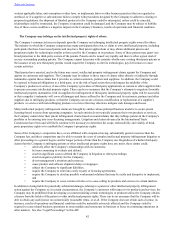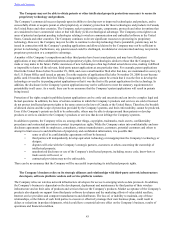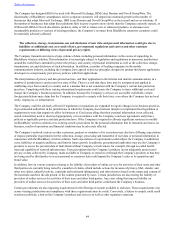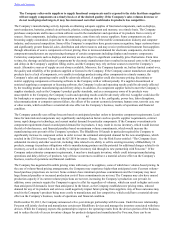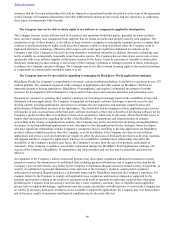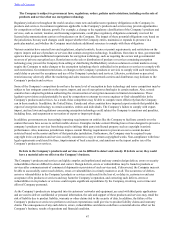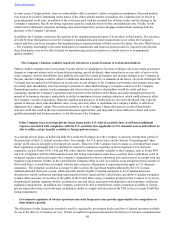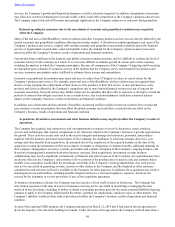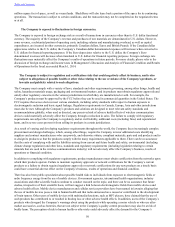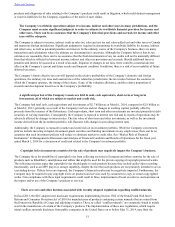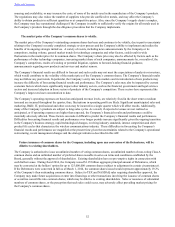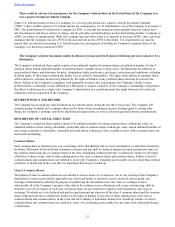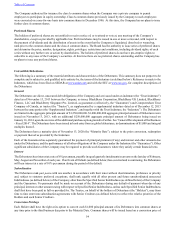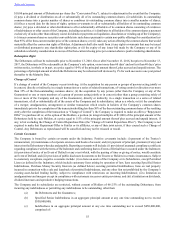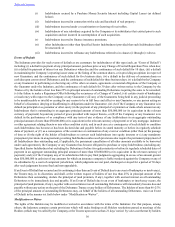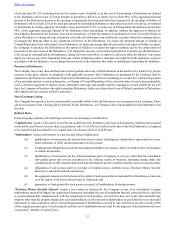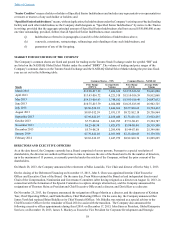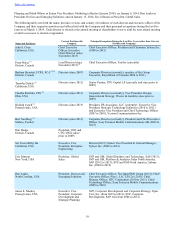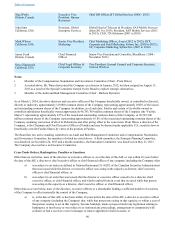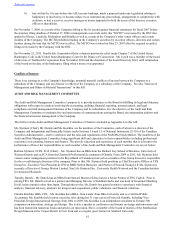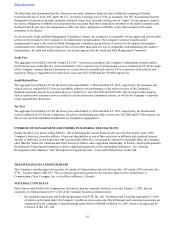Blackberry 2014 Annual Report Download - page 60
Download and view the complete annual report
Please find page 60 of the 2014 Blackberry annual report below. You can navigate through the pages in the report by either clicking on the pages listed below, or by using the keyword search tool below to find specific information within the annual report.
52
sourcing and availability, or may increase the costs, of some of the metals used in the manufacture of the Company’s products.
The regulations may also reduce the number of suppliers who provide conflict-free metals, and may affect the Company’s
ability to obtain products in sufficient quantities or at competitive prices. Also, since the Company’s supply chain is complex,
the Company may face reputational challenges if the Company is unable to sufficiently verify the origins for all metals used in
the Company’s products through the due diligence procedures that the Company implements.
The market price of the Company’s common shares is volatile.
The market price of the Company’s outstanding common shares has been and continues to be volatile, due in part to uncertainty
relating to the Company's recently completed strategic review process and the Company's ability to implement and realize the
benefits of its ongoing strategic initiatives. A variety of events, including news announcements by the Company or its
competitors, trading volume, general market trends for technology companies and other factors, could result in wide
fluctuations in the market price for its common shares. The Company’s share price may also be affected by factors such as the
performance of other technology companies, increasing market share of such companies, announcements by, or results of, the
Company’s competitors, results of existing or potential litigation, updates to forward-looking financial guidance,
announcements regarding new products and services and market rumors.
The Company’s financial results are difficult to forecast and such results may not meet the expectations of analysts or investors,
which would contribute to the volatility of the market price of the Company’s common shares. The Company’s financial results
may not follow any past trends. In particular, the Company’s entry into new markets and its introduction of new products may
increase the difficulty of forecasting financial results and performance. The Company’s sales may also be impacted by current
economic factors which more significantly impact other industry sectors, such as the financial, government and legal services
sectors and increased adoption in those sectors of products of the Company’s competitors. These sectors have represented the
Company’s largest end user concentration to date.
The Company’s operating expenses are based on anticipated revenue levels, are relatively fixed in the short term to medium
term and are incurred throughout the quarter; thus, fluctuations in operating profit are likely. Significant unanticipated sales and
marketing, R&D, IT, professional and other costs may be incurred in a single quarter which will affect results. Additionally,
many of the Company’s products are subject to long sales cycles. As a result, if expected revenues are not realized as
anticipated, or if operating expenses are higher than expected, the Company’s financial results and performance could be
materially adversely affected. These factors can make it difficult to predict the Company’s financial results and performance.
Difficulties forecasting financial results and performance over longer periods increase significantly given the ongoing transition
in the Company's business strategy, rapid technological changes, evolving industry standards, intense competition and short
product life cycles that characterize the wireless communications industry. These difficulties in forecasting the Company's
financial results and performance are magnified at the present time given the uncertainties related to the Company's operational
restructuring, recent management changes and the strategic initiatives described in this AIF.
Future issuances of common shares by the Company, including upon any conversion of the Debentures, will be
dilutive to existing shareholders.
The Company is authorized to issue an unlimited number of voting common shares, an unlimited number of non-voting Class A
common shares and an unlimited number of preferred shares issuable in series on terms and conditions established by the
Board, generally without the approval of shareholders. Existing shareholders have no pre-emptive rights in connection with
such further issues. During fiscal 2014, the Company issued $1.25 billion aggregate principal amount of Debentures, which
may be converted at the holders’ option for up to 125,000,000 common shares (subject to adjustment in certain circumstances).
If the Debentures were converted in full as at March 1, 2014, the common shares issued would represent approximately 19.2%
of the Company’s then outstanding common shares. Subject to TSX and NASDAQ rules requiring shareholder approval, the
Company may make future acquisitions or enter into financings or other transactions involving the issuance of common shares
or securities convertible into common shares, which may be dilutive to existing shareholders. Sales or issuances of substantial
numbers of common shares, or the perception that such sales could occur, may adversely affect prevailing market pricing for
the Company's common shares.
Table of Contents


